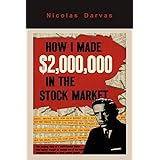Navigating the dynamic world of precious metals can often feel like a complex endeavor, especially when trying to pinpoint the exact value of your investments. The accompanying video offers a concise visual overview of today’s silver price in the USA, detailing different purities and weight measurements. However, to truly understand these figures and make informed decisions, it is essential to delve deeper into the nuances that shape these values every single day.
This article aims to demystify the factors presented in the video, providing a comprehensive guide to understanding current silver prices USA. We will explore the various purities like 22K, 24K, .925 sterling, and .999 fine silver, alongside common weight units such as grams, tolas, and kilograms. By the end, you will have a clearer picture of what influences the price you see and how to apply this knowledge effectively.
Understanding Silver Purity: 22K, 24K, and Sterling
When you see current silver prices, understanding the purity level is paramount to interpreting its true value. Silver purity refers to the percentage of pure silver present in an item, with the remainder typically being alloys like copper to enhance durability. Different purities serve various purposes, from fine investment bullion to robust jewelry pieces.
What Does 24K (.999 Fine) Silver Mean?
24K silver, also known as .999 fine silver, represents the purest form of silver available on the market. This purity signifies that the item contains 99.9% pure silver, with only 0.1% consisting of other trace elements. Investment-grade bullion, such as bars and coins, is almost exclusively made from .999 fine silver due to its high purity. Its softness makes it less suitable for everyday jewelry, though it holds the highest intrinsic value based on its silver content.
Exploring 22K Silver and Its Uses
While 22K is more commonly associated with gold, it can also refer to silver alloys, though less frequently. In silver, purity levels are usually expressed in decimal form rather than carats. However, if referring to silver jewelry, 22K would imply a very high silver content, similar to .916 fine. Such high-purity silver jewelry would be quite soft and prone to scratching, making it more delicate than other common jewelry types. This type of silver is often chosen for intricate designs where its malleability is an asset.
The Popularity of .925 Sterling Silver
.925 sterling silver is perhaps the most widely recognized purity for silver jewelry and decorative items. This alloy consists of 92.5% pure silver and 7.5% other metals, typically copper. The addition of copper significantly increases the silver’s hardness and durability, making it ideal for items that experience regular wear. This balance of beauty and strength ensures that sterling silver remains a popular and accessible option for consumers seeking quality silver pieces.
Britannia Silver: A Refined Standard
The video title mentions “Britannia Jewelry,” which refers to Britannia silver, a historical standard of silver purity. Britannia silver is 95.8% pure silver, or .958 fine, making it purer than sterling silver. This higher purity was introduced in England in the late 17th century as an alternative to sterling, specifically for silverware. Today, Britannia silver is less common than sterling but is prized for its lustrous appearance and higher precious metal content, often found in collectible coins or specialized jewelry.
Decoding Silver Weight Units: Gram, Tola, and Kilogram
Beyond purity, understanding the various weight units used in the silver market is crucial for accurate pricing. The price of silver per gram, tola, or kilogram directly impacts the total cost of any silver purchase or sale. Different regions and markets often favor specific units, so familiarity with each helps in comparing prices globally and locally.
The Ubiquitous Gram and Its Significance
The gram is the most commonly used unit of weight for silver, particularly in the jewelry industry and for smaller investment pieces. When discussing today’s silver price per gram, you are usually looking at the most granular pricing available. This unit provides a precise measurement, allowing for accurate valuation of even small silver items. Many online pricing tools and dealers provide prices quoted in grams, making it a universal standard for comparison.
Tola: A Traditional Measurement
The tola is a traditional unit of weight primarily used in South Asia, particularly in India, Pakistan, and Bangladesh, for measuring gold and silver. One tola is equivalent to 11.66 grams or 0.375 troy ounces. While not as common in Western markets, understanding the tola is important if you are dealing with silver from these regions or within communities that maintain these historical trading practices. Many local jewelers and bullion dealers in these areas will quote silver price per tola.
Kilogram: For Bulk Silver Investments
The kilogram (kg) is the standard unit for larger quantities of silver, especially for serious investors and industrial buyers. One kilogram is equivalent to 1000 grams or approximately 32.15 troy ounces. Silver bars are frequently manufactured and traded in kilogram weights, offering a more convenient and cost-effective way to buy significant amounts of precious metal. When looking at today’s silver price per kg, you are usually engaging with the wholesale or institutional market.
Factors Influencing Today’s Silver Price in USA
The today silver price in USA is not static; it fluctuates continuously based on a multitude of global and economic factors. These influences create a complex interplay of supply and demand, impacting how silver is valued at any given moment. Understanding these underlying drivers helps investors and consumers anticipate market movements and make more strategic decisions.
Supply and Demand Dynamics
Like any commodity, the basic principles of supply and demand significantly dictate silver’s price. Mine production, recycling efforts, and government stockpiles contribute to the overall supply. Demand, on the other hand, comes from various sectors including industrial usage, jewelry manufacturing, investment (bullion), and photographic applications (though this has decreased). A surge in industrial demand or a dip in mining output can cause silver prices to rise, while an oversupply or reduced demand can lead to price drops.
Economic Indicators and Investment Demand
Global economic health plays a pivotal role in silver’s valuation. During times of economic uncertainty or inflation, investors often flock to precious metals like silver as a safe-haven asset, driving prices higher. Conversely, a strong economy with high-performing stocks might divert investment away from silver. Interest rates, inflation reports, and GDP growth figures are all closely monitored as they offer clues about the broader economic landscape and its potential impact on silver.
Industrial Applications and Technological Advancements
Silver is an incredibly versatile metal with numerous industrial applications, making it unique among precious metals. It is used in electronics, solar panels, medical instruments, and water purification systems due to its excellent electrical conductivity, thermal conductivity, and antimicrobial properties. Technological advancements that require more silver, such as the growth of green energy technologies, can substantially increase industrial demand. This industrial usage provides a strong baseline demand that often supports silver’s price, unlike gold which is primarily an investment and jewelry metal.
Strength of the US Dollar
Since silver is primarily traded in US dollars on international markets, the strength of the dollar directly impacts its price. A stronger US dollar makes silver more expensive for buyers using other currencies, potentially dampening demand and lowering prices. Conversely, a weaker dollar makes silver cheaper for international buyers, which can boost demand and push prices up. This inverse relationship is a critical factor for anyone monitoring current silver prices in USD.
Buying Silver: Jewelry vs. Bullion
When you consider purchasing silver, the purpose of your acquisition will largely dictate whether you opt for jewelry or bullion. The value proposition for each type of silver product differs considerably, mainly due to factors like fabrication costs, premiums, and market liquidity. Understanding these differences is essential for making a sound investment or a satisfying personal purchase.
Spot Price and Its Role in Silver Valuation
The spot price of silver represents the current market price for one troy ounce of .999 fine silver for immediate delivery. This is the baseline price that all silver products are measured against, regardless of their form. Whether you are buying a silver bar or a piece of jewelry, the intrinsic value of the silver content will always be tied back to the global spot price. Knowing this fundamental price helps in evaluating the fairness of any retail price offered.
Understanding Premiums on Silver Products
When you buy silver, you will notice that the price per ounce is always higher than the spot price; this difference is known as the premium. Premiums cover the costs associated with refining, manufacturing, marketing, and distributing the silver product. For silver bullion (bars and coins), premiums tend to be lower due to simpler manufacturing processes. However, silver jewelry typically carries much higher premiums because of design, craftsmanship, brand value, and retail markups. This means jewelry is usually not considered a direct investment in the metal itself.
Investment-Grade Silver Bullion
For investors primarily interested in the intrinsic value of silver, bullion is the preferred choice. Silver bars and coins (like American Silver Eagles or Canadian Silver Maples) are produced in standardized weights and purities, making them easy to buy, sell, and verify. The premium over spot price for bullion is typically a small percentage, allowing investors to acquire more silver content for their money. These products are valued almost entirely on their precious metal content and are a direct play on the silver market.
The Value Proposition of Silver Jewelry
Silver jewelry, while containing real silver, is valued for its artistic merit, design, and aesthetic appeal rather than solely its metal content. When purchasing silver jewelry, you are paying for the craftsmanship, the brand, and the retail experience, in addition to the silver itself. The cost of labor, intricate designs, and marketing are all factored into the final price. Therefore, if your primary goal is to invest in precious metals, buying jewelry is generally less efficient than buying bullion due to these substantial premiums.











